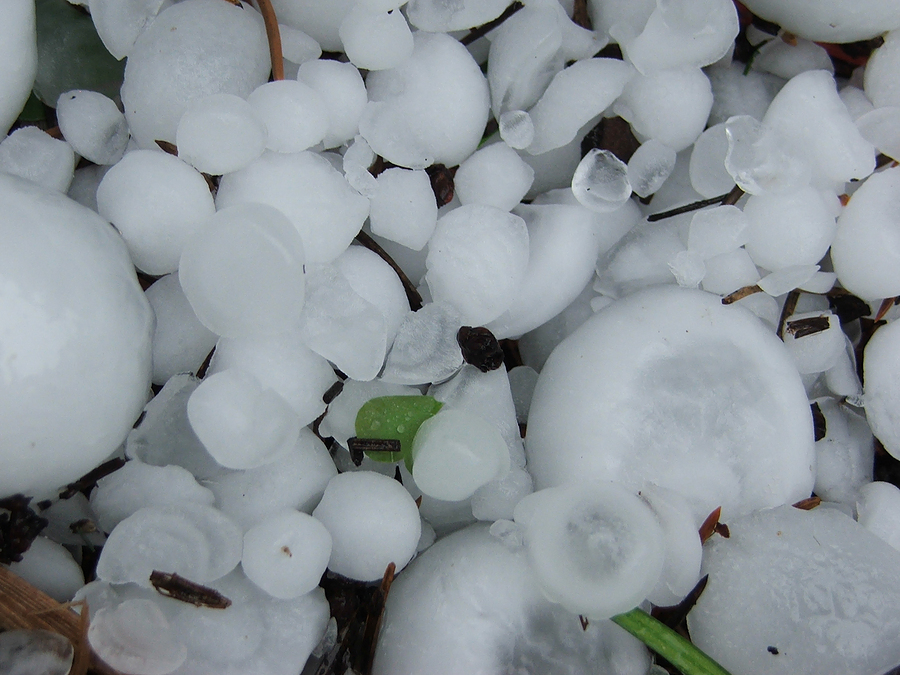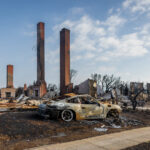Texas has a hail problem. OK, from an insurance perspective, Texas has a weather problem, period, but that’s another story altogether.
Back to hail. On June 6, a hailstorm walloped heavily populated areas of North Texas with baseball sized hail and served as a reminder that the state is one of the most hail-prone in the nation. Dallas, Tarrant and Denton counties suffered the brunt of the storm, which racked up around $1 billion in insured losses to residential and commercial properties and automobiles, according to Karen Clark & Co. The Insurance Council of Texas reported an estimated 20,000 structures and 25,000 vehicles were damaged.
The June 6 pelting was reminiscent of the April 12, 2016, storm in San Antonio and Bexar County that resulted in $1.4 billion in insured losses, as well as the May 1995 hailstorm in Fort Worth that left behind $1.1 billion in losses.
The San Antonio/Bexar County storm broke records as the state’s most expensive hailstorm, according to LexisNexis Risk Solutions’ 2017 Home Trends Report, which analyzed data from accident year 2016 and was published in December 2017.
Nationally, hail losses totaled $8.4 billion in 2016, the highest since 2011, the Home Trends Report shows. That’s a 44 percent increase in loss costs from hail over 2015 levels on a national basis.
U.S. catastrophe losses increased significantly overall in 2016, driven largely by wind and hail claims in Texas and Colorado, according to the report. Texas ranked first for both catastrophe claims frequency and losses that year. Colorado came in third for frequency and second for losses. Combined, the two states represented 48 percent of catastrophe losses nationwide for 2016.
Minimizing Losses
Historical data shows that it’s impossible to say whether any one location is going to have major hail event from one year to the next, said George Hosfield, senior director, Home Insurance Solutions, at LexisNexis Risk Solutions and one of the authors of the report.
“We can’t predict in any given year in any given location how bad the hail is going to be. But certainly, if we look at historical losses in that area, in that neighborhood, in that zip code, we can see that there is a pattern. It may go up one year and down the next but if we price to the middle, then we can actually get a much better view of that by looking at large data sets of historical loss data,” Hosfield said.
If an insurer is pricing weather risk on a statewide basis rather than by smaller geographical areas, it may be “missing the mark in terms of the actual hail damage. So, understanding where those gaps are and where you may be misaligning the pricing in terms of the actual risk on a by peril basis is going to be key to understanding the drivers of your profitability going forward,” Hosfield said.
Agents may also be able to help mitigate the intensity of hail damage both before and after an event occurs, Hosfield said. “It depends on the insurance company but in many cases the agent may be in a position to inspect the roof of new business or inspect the home of new business to ensure they have a good sense of the condition of that roof when they write it. That it’s a young roof or that it doesn’t have pre-existing hail damage. That’s a key piece.”
Contacting customers immediately after a hail event can also go a long way toward helping the insured deal with losses. Many times, when an agent makes contact after an event occurs, they “create a better experience for the consumer. Because they’re reaching out proactively, they’re looking at how they can help. That has two benefits. One, the consumer knows that the agent is looking out for them and they’re making sure that they’re okay, which is what they’re there for. But it also allows the insured the first point of contact versus the fly-by-night storm contractor who might knock on their door soon afterward with an offer to fix all their problems,” Hosfield said.
Assessing Risk
LexisNexis advises insurers to assess their risk and analyze their exposure geographically. Determining exposure at the census block group, census tract, zip code and county levels can make a difference in a carrier’s loss ratio. Insurers can price their risk better if they have a deep understanding of local loss histories and weather patterns on a by peril basis, Hosfield said.
Insurers also can use that awareness of past loss experience in a given area to help consumers prepare for bad weather events through targeted education campaigns. For instance, customers in hail-prone areas might be advised to: have their roof inspected for hail vulnerability; determine the age of their roof and consider and upgrade, if needed; install wind shutters; remove cars and furniture from open areas before an event; and read their homeowners policies to understand what is covered and what is not.
Was this article valuable?
Here are more articles you may enjoy.


 Alibaba Teams up With BMW to Develop AI for Cars in China
Alibaba Teams up With BMW to Develop AI for Cars in China  Deutsche Bank, Mudrick Sue Ambac Over $65 Million Transfer
Deutsche Bank, Mudrick Sue Ambac Over $65 Million Transfer  Wall Street Brokers Start Trading Insurer Claims From LA Fires
Wall Street Brokers Start Trading Insurer Claims From LA Fires  Catastrophe Experts Tap AI to Tackle Soaring Insured Losses
Catastrophe Experts Tap AI to Tackle Soaring Insured Losses 